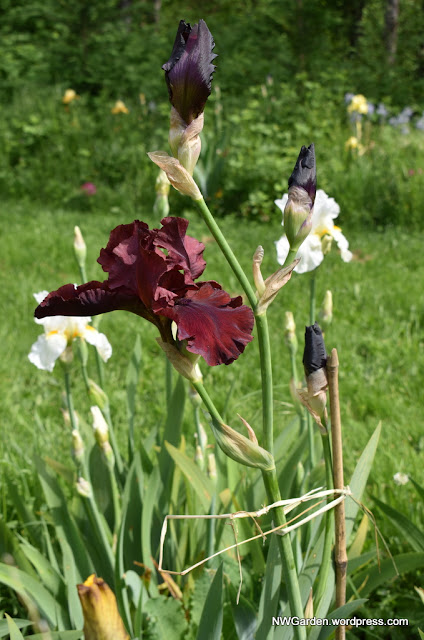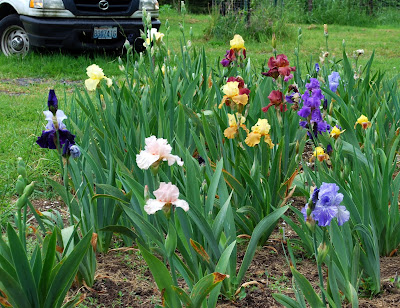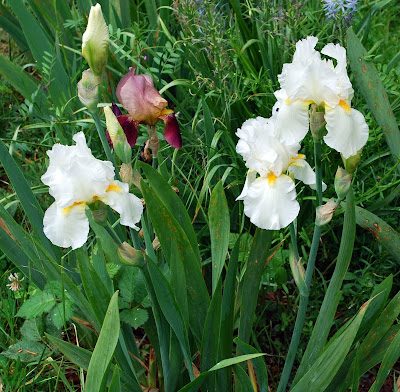 |
| Victoria Falls. 5.10.19 |
Moving into more active iris blooming season. I'm impressed that so many that I planted last summer and fall are coming into their first bloom. True, only one flower per rhizome (Except the ugly "My Friend Jonathan" which has two flower stalks), but it gives me a chance to see how they look. They may also be smaller than they will be when established.
Today's most interesting is the modern "Victoria Falls", a fragrant, pale blue, rebloomer. The color is nice. In the sunlight, there appears to be a dusting of diamond dust on the petals, that glitters in the sun. Very nice effect, which I have not seen before.
Of others, "Blutique" is not open yet, but the white spatters on blue show through the bud.
"His Royal Highness", the other half of the package that contained "My Friend Jonathan', is OK. Strong looking growth, dark blue, slight fragrance. Nothing that makes it stand out from other blue irises, but not bad. Also marketed as a rebloomer. I was thinking, maybe "My Friend Jonathan" might be more interesting if it actually reblooms in summer, when the light and other other flowers are different.
 |
| Blutique. 5.10.19 |
I recall "Spiced Custard" as being a larger flower. It may be that my rescuing it from the edge of the woodlot, it didn't have time to build energy for a better performance. I don't detect any fragrance.
And finally, a white iris with a golden beard. This resulted from my pollinating "Spiced Custard" with pollen from "Immortality", many years ago. I grew a number of seedlings, but this was the only one I kept. It looks as good as any, with a golden beard instead of the white one of "Immortality". Mildly fragrant, smells like an iris. So for my own record keeping, it's "Golden Caterpillar", short for "Golden Caterpillar Ascends The Snow Covered Mountains to Visit the Temple". :-)
 |
| His Royal Highness. 5/10/19 |
 |
| Spiced Custard. 5.10//19 |
 |
| My Hybrid, "Golden Caterpillar". 5.11.19 |

















































